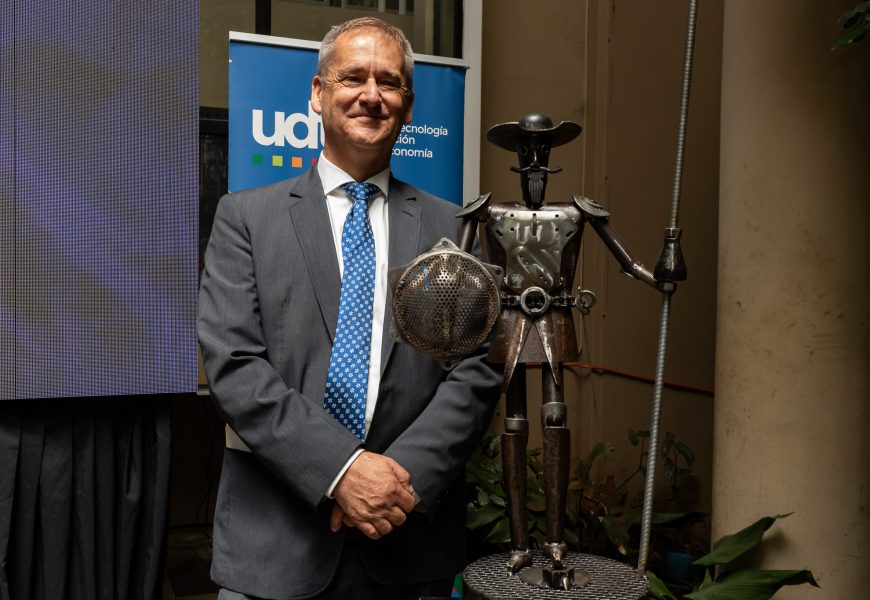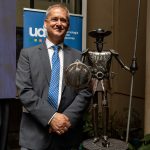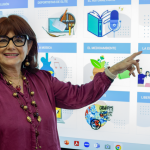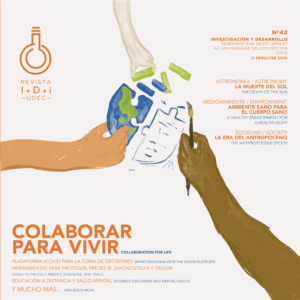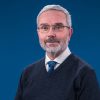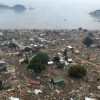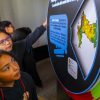A pioneer in Chile, director of the UDT Center of Excellence for almost three decades, clear promoter of the bioeconomy in Chile, innovator in process scaling up, biomaterial creation, and circular economy, Dr. Alex Berg Gebert was interviewed in November 2024 about the center that he founded and has led since 1996.
By: Soledad Toledo Cabrera, journalist of Vicerrectory of Research and Development lucabrer@udec.cl | Photo: VRID Archive
“Everything started as a dream… a not very well-defined one, a concern.” Squinting his eyes, Dr. Alex Berg Gebert relives in his office the first steps of the Technological Development Unit (UDT), a center he founded and has led for 30 years. The UDT, unique in Chile, arose thanks to Dr. Berg’s experience in Germany, where he did his postgraduate studies and specialized in chemical wood technology, obtaining his doctorate at the University of Hamburg in 1987. After working as a project manager at the pulp production plant at Kunz Holding GmbH & Co. KG, he was visited by the UdeC researcher Dr. Jaime Baeza Hernández (R.I.P.), who proposed him to create a center with similar characteristics in the region.
“Jaime was an innate dreamer,” Dr. Berg recalls. “I imagined an ever-changing, different, challenging future.” His idea was to create a space in the Biobío region whose goal would be to apply knowledge to real industry problems. “The engineer dreams of that. Having a small-scale solution, testing it on a larger scale, and discovering the multiple problems. It’s fascinating. So, we wanted a center that wasn’t just papers, not only evaluations but to actually pursue the application of technological solutions developed within the University,” says Dr. Berg.
The German company donated the first pieces of equipment, which arrived in the country in ten containers. The center started with four researchers and has more than 60 professionals today. It has become an interdisciplinary and diverse space with about 40 pilot plants for different processes and projects in areas as varied as the valorization of agricultural and forestry biomass, the generation of new sustainable products, and the replacement of fossil-based raw materials with more environmentally friendly materials.
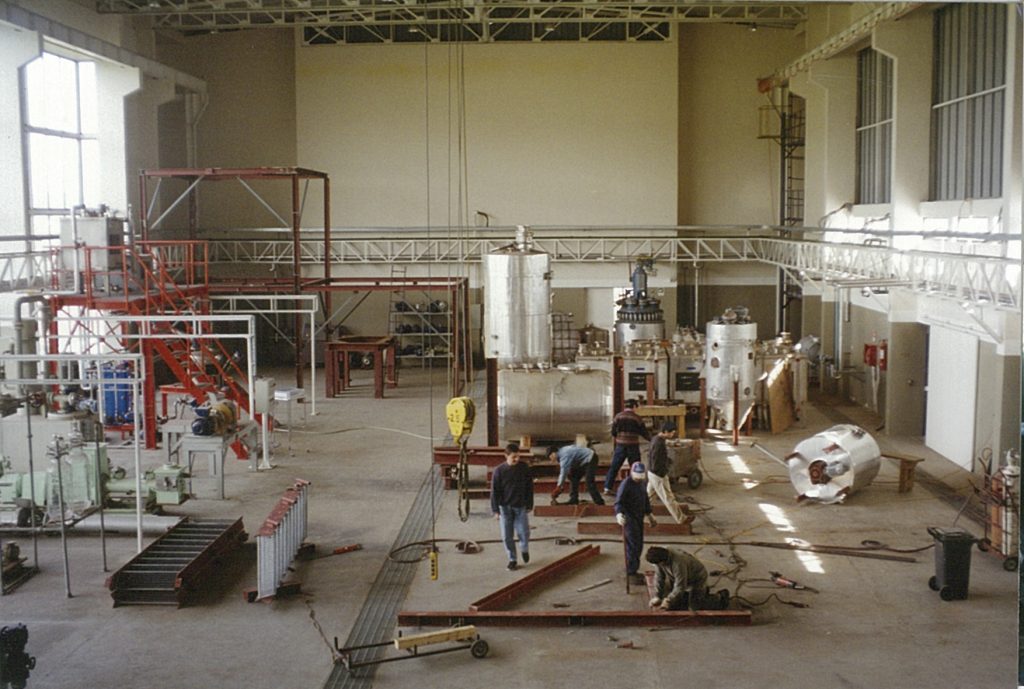
“Luck, however you want to define it, plays an important role in life. Work, undoubtedly, ideas, but it also takes luck for things to fall into place,” stresses Dr. Berg. “I arrived in Chile in ’94 or ’95, and there was a tremendously positive atmosphere; people were hopeful. It was a time of entrepreneurship when everyone was trying to do things, but from a scientific and technological point of view, we were just starting. So, we had containers full of equipment, but nothing else, right? There was no experience, no well-defined ideas.”
Bridges between academia and industry
Deciding the way forward was not trivial. “We are a tiny scientific community. What can we do? We can’t compete with the big guys—it’s impossible—but we can ally with them and find niches where we can make important contributions. But I can tell you now that we did not have it so clear then, and we had to start looking, and above all, to establish a relationship with key actors and players for the country’s scientific development.”
Berg values both the approved projects and those that did not see the light of day because, in his opinion, they allowed the consolidation of a human team and generated trust in different areas. “I admit that it was much slower, mind you, much slower than I expected. I thought that in five years, I was going to have a flourishing institute. But the maturation time of an institute like ours takes time. There are delays in establishing a capacity that has a real impact on the market.”
“This ‘delay,’ even with the University as an ally, is because there are other variables that are not controlled by the University or science. It has to do with culture, needs, and legal impositions.” However, Berg recognizes that a local company opened the doors to him, and they were able to start projects with which to begin weaving a relationship between the company and the university.
S: Despite being pioneers in the search for added value for forest biomass or by-products of agricultural activity, these issues have become urgent in recent years. What did it take for these issues to move forward?
A: These are systems. Individual work, not even that of working groups, is useless here; it’s a system that has to work. A system that has components of research, technological development, production, financing, innovations, etc. Therefore, this whole system has to mature. In the ’90s, the mass production of commodities exported to international markets was the solution that no longer works for us today. What are we going to export? More fish? More copper? More biomass? No, obviously not, because we don’t have that possibility. Our current challenge is to add value to products. I think company executives are convinced that a new stage is coming where research and development play an essential role, but it is unclear how to do it.
S: At what point of maturation is Chile in these issues today?
A: I would say that we have evolved a lot. We are in a very good position for different reasons. Obviously, we are missing several issues, including financing, but it’s not just money. Money is so unimportant that you must have it so you don’t have to worry about it, right? (He laughs and then explains): If you don’t have money, you worry all day. And I think that money should be superfluous; you should not worry, but for that, you have to have it. The Basal (fund) gave us that possibility.
In that sense, the science system in Chile has a great virtue: It has not changed much from government to government; a line has been maintained. It needs a long-term view; it’s not something that will be solved in four years. It requires a much more strategic look and much longer, and that, fortunately, has happened in Chile, which is not the case in other countries.
S: Where would you focus the R&D efforts?
A: I would say there are two main issues: bioeconomy and replacing fossil raw materials derived from oil and natural gas, which surround us everywhere, with renewable resources. Which renewable resources? By-products of agricultural and forestry activity. Chile has a huge, very, very large amount of resources. It is not immediate; we have to see how to do it.
The second challenge, closely linked to the previous one, is called the circular economy. What is happening today is absurd! In Chile, we produce more than 1.2 kilos of garbage daily. We buy, use, and throw away, and while we don’t have the resources to produce everything we need, the amount of waste we generate is such that we literally don’t know what to do with it.
S: How would you summarize the contribution of UDT in these years?
A: In Chile, we have a research system that is quite good. It’s tiny, but it’s good. But we produce knowledge fundamentally, reflected in papers, reports, and sometimes even patents. However, we have a considerable weakness in process scaling. I would say that at UDT, we were the first ones to focus on and devote ourselves to this. What we lack are institutions with which to collaborate.
Farewell, replacement, and new horizons
In a ceremony led by the Rector of the University of Concepción, Dr. Carlos Saavedra Rubilar, Dr. Alex Berg handed over the baton to Dr. Juan Carlos Carrasco Moraga, who took over as Executive Director of UDT, after being the head of the unit’s Environment Area. On the occasion, in front of university authorities, family, and friends, he said: “I have carried the University of Concepción in my heart since I was a student, and I am sure that that will not change.”
S: When you close this chapter as director of this center, you will dedicate yourself to its spinoff; what is coming in this new period?
A: Look, the truth is I don’t want to stop doing research. But I’ll do it from across the street. What I have done so far is from the point of view of a provider of technological solutions. Now, there are other challenges than the technological part; you have to look at permits, financing, personnel, and the market, see who will buy from you, and meet the quality standards. It is a really complex task, but at the same time, entertaining and challenging. And that’s what grabs my attention. For me, staying active is critical. I can’t imagine reading El Mercurio three times a day. (He laughs again but then adds, more serious now.) UDT is much more than its director; it is the people, technicians, engineers, and researchers working here. It was a time rich in experiences, joy, and challenges. I lived it to the full.
Last modified: 3 de septiembre de 2025
